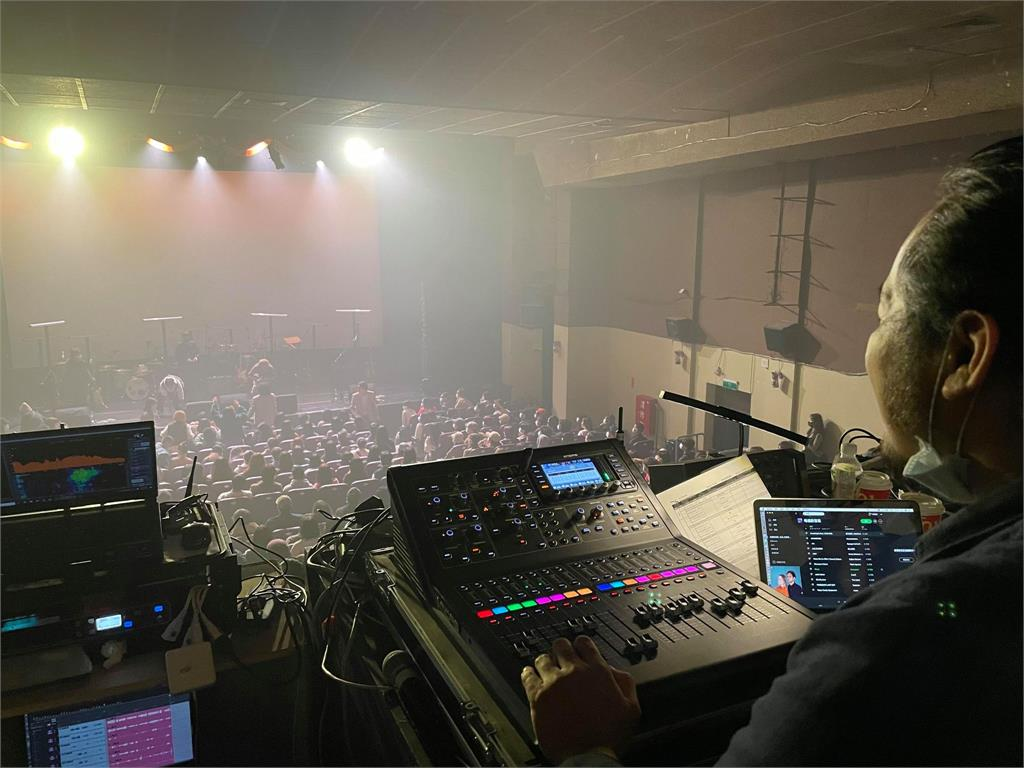Touchscreens Are Now Touring-Ready
Over the past decade, touchscreen technology has moved from novelty to necessity. Once reserved for control booths and studio installations, touchscreen interfaces are now appearing regularly on the road—in lighting consoles, media servers, audio racks, and even power distribution units.
With their compact footprint, intuitive operation, and rapid workflow, touchscreens offer a flexible solution for fast-paced touring environments. But they also bring specific operational demands that require thoughtful integration.
This article explores the pros, cons, and best practices of using touchscreen interfaces in touring setups—from festival rigs to world tours.
The Benefits of Touchscreens on the Road
1. Speed and Direct Access
Unlike encoders or menu-based navigation, touchscreens offer direct access to functions. Tap-to-trigger macros, visual cue lists, and gesture-based programming significantly reduce operation time during setup and live shows.
In a festival changeover window of 10 minutes, being able to touch-select scenes, faders, or device pages is far faster than scrolling through buttons.
2. Compact Control Footprint
Touring space is always limited. Touch-enabled control surfaces reduce the need for physical faders and knobs, consolidating multiple functions into a single interface. Many LDs and sound engineers now tour with all-in-one compact consoles featuring integrated multi-touch panels.
3. Visual Feedback for Faster Troubleshooting
When something goes wrong mid-show, visual status indicators on touchscreens (like DMX signal health, audio levels, or node status) can speed up diagnostics. Color-coded feedback is more immediate than cryptic menu text.
4. Customizability
Touchscreen layouts are often configurable. Touring crews can build pages tailored to their workflow: one page for load-in, one for tech rehearsals, another for the live cue stack. This reduces operator error and increases speed under pressure.

Touchscreen Use Cases in Touring Systems
| Use Case | Device Type | Touchscreen Role |
|---|---|---|
| Lighting Control | Lighting desk, remote tablet | Cue selection, color picking, real-time fixture control |
| Audio Monitoring | Digital mixers, IEM racks | Channel mixing, EQ curves, monitor sends |
| Media Playback | Media servers (e.g. Resolume, Green Hippo) | Clip triggering, timeline navigation |
| Power Management | Advanced PDUs | Load display, breaker status, remote toggling |
| System Monitoring | Network nodes, processors | IP status, health check, device rebooting |
Challenges and Risks on the Road
While touchscreens offer power and flexibility, touring environments are unpredictable. Some key concerns include:
1. Glare and Visibility
Outdoors or under strong stage lights, reflections can make screens unreadable. Anti-glare filters or brightness-adjustable displays help, but operators should also position screens with care during setup.
2. Physical Vulnerability
Touchscreens are more fragile than physical encoders. Road cases, foam padding, and careful handling are essential—especially in shared or rented rigs.
3. Moisture and Weather Risks
Rain, humidity, or condensation during load-ins can disable or damage touchscreens. IP-rated enclosures or transparent protective overlays are recommended in outdoor situations.
4. Latency or Freeze Issues
Software-based touch systems can lock up under heavy CPU load. Always have a manual fallback route (e.g., physical fader banks or keyboard shortcuts) ready in case of failure.
Touring Best Practices for Touchscreen Deployment
Use Ruggedized Hardware
Choose touring-grade devices with industrial or military-grade touchscreen components. Avoid fragile consumer tablets unless housed in robust mounts.
Customize Your Layouts Before Tour Start
Pre-program page layouts, color schemes, and navigation logic during production rehearsals. Lock critical buttons to avoid accidental triggers during showtime.
Combine with Physical Faders Where Needed
While touch-only workflows are growing, hybrid setups offer more confidence in high-pressure moments. Many consoles now feature a balance between touchscreen and physical fader banks.
Backup Strategies
Have offline access to configuration files and show profiles via USB or cloud storage. Always carry a USB mouse/keyboard in case touch becomes unresponsive mid-show.
Training Matters
Educate your crew—not all techs are touchscreen-fluent. A 15-minute overview on day one of the tour can prevent hours of confusion later.
Case Study: EDM Touring Rig with Multi-Touch Workflow
A 12-city electronic music tour in Europe implemented a dual-touchscreen setup for lighting and visuals:
Lighting Console: Touch control of chases, dimmer levels, and fixture movement macros.
Media Server: Grid-based touch triggering of pre-programmed video loops and FX overlays.
Backup Plan: Two iPads running remote OSC interfaces for emergency override.
Benefits reported:
30% faster pre-show programming
One-person control over both lighting and media
Near-zero show-time input errors due to page locking and color coding
The Future of Touch in Touring
As software-based control systems continue to expand, touchscreens will only grow more prevalent. Combined with gesture recognition, wireless sync, and cloud-based show file access, touch control is poised to become central to modern show operations.
Expect innovations like:
Capacitive multi-point control for two-operator workflows
Fold-out screens embedded in road cases
Touch feedback (haptic) for blind operation
Touch + voice hybrid cue triggering
Touring is no longer about muscle memory alone—it’s about interface design.
Conclusion
Touchscreen interfaces bring agility, flexibility, and visual clarity to touring setups. When deployed correctly—with attention to protection, visibility, and redundancy—they streamline workflows and empower smaller crews to do more.
Like any tool, they require planning and training. But for the modern production team, touchscreen control is no longer an optional extra—it’s a new standard in the touring toolkit.
READ MORE:





Blue Sea Lighting is an enterprise with rich experience in the integration of industry and trade in stage lighting and stage special effects related equipment. Its products include moving head lights, par lights, wall washer lights, logo gobo projector lights, power distributor, stage effects such as electronic fireworks machines, snow machines, smoke bubble machines, and related accessories such as light clamps.
Quick Links
For more questions subscribe to our email








